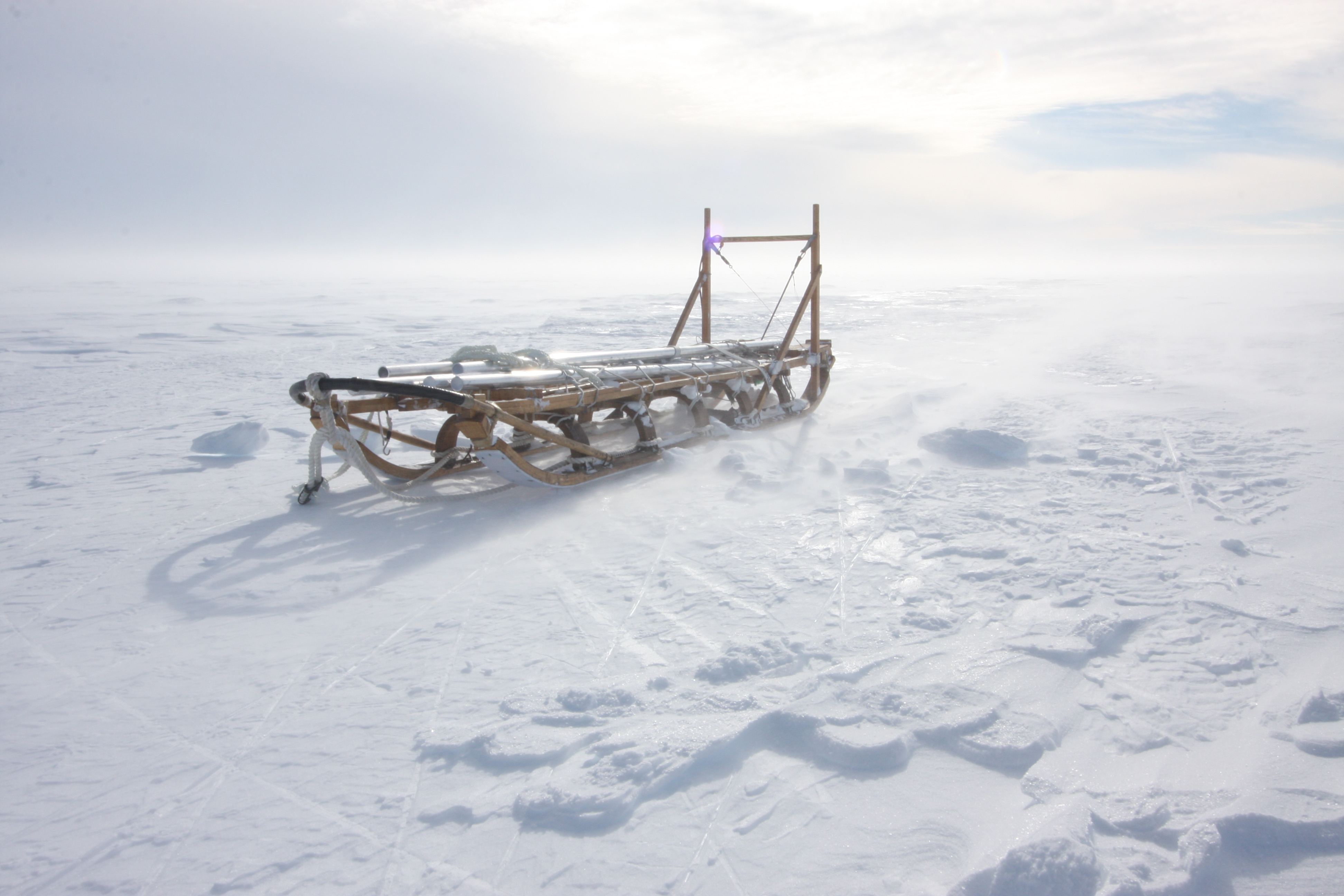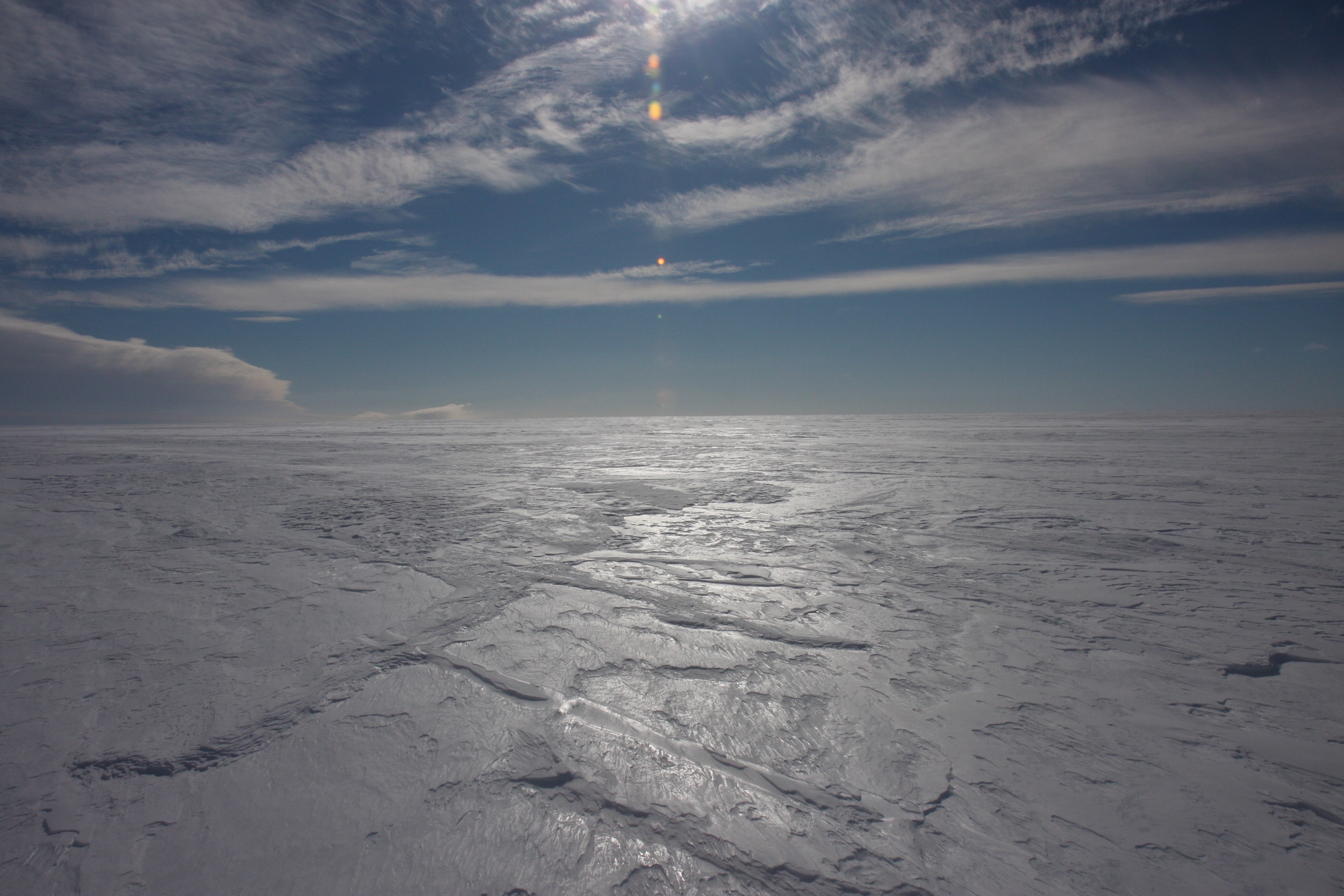
The first time I landed on the Siple Coast of West Antarctica, I immediately felt disoriented. The landscape was a monotonous flat white, with wind-scoured snow and ice extending to identical horizons in every direction. In this isolated spot 380 miles from the South Pole, the only point of reference was the pile of bags and crates that would become a camp for three researchers plus myself, a journalist.
Over the next three weeks, the sun traveled circles in the sky. Day and night blended into a uniform snow-reflected glare. Smells disappeared, except for the fuel that we pumped into our snowmobiles. Every direction seemed the same.
Some parts of my mind gradually attuned to this unfamiliar environment, while others—strangely—did not.
During an hours-long snowmobile ride, the horizon that we’d been staring at suddenly opened up, and I realized that we had crested a barely perceptible hill. We zoomed down and down the far side—but after an hour of coasting downhill, I glanced at my GPS and realized that we had only descended 15 feet.
Since that first trip, I have made five more visits to Antarctica, each one lifechanging in its own way. On one occasion, I watched as researchers melted a narrow wormhole through the half a mile of ice beneath our boots, and then lowered a camera—allowing us to peer into a subglacial lake that no human had ever seen before.
But to this day, my first visit to the Siple Coast and the disorientation that I felt still sticks with me: a reminder that some things are too large for humans to see and comprehend.
When I look at a Landsat image captured from space, I can see the Siple Coast in a very different way.
Six massive glaciers, each 20 to 30 miles across, ooze off the coastline and merge into slab of ice the size of France that floats on the distant, unseen ocean. The individual glaciers are marked by lazily curving, riverine flow-lines that extend 150 miles along their paths. These rivers of viscous white molasses are separated by domes and ridges of ice that sit between them.
I once camped on one of those high places, called Siple Dome, and there at ground level I struggled to recognize it as a pinnacle. But when seen by a satellite camera from a low angle, these domes and ridges are large enough to cast shadows.
In the 1970s, scientists landed at dozens of locations on these glaciers and pounded metal poles into the snow. They lingered for 24 hours at each position, getting satellite fixes on each pole’s exact location with an early predecessor of GPS. They returned a year or two later to each site, found the same poles — now several feet shorter, due to the accumulation of snow — and re-measured their positions. In this way, they calculated how far each pole had moved, and in which direction, to generate a rough sketch of how these glaciers flowed.
This monumental feat of grunt-work immediately revealed a major surprise. Five of these glaciers were moving 1,000 to 2,000 feet per year, a speed that is common in large Antarctic glaciers. But one of them, Ice Stream C, was flowing at only about one-fiftieth that speed, 20 to 40 feet per year.
The surfaces of the other glaciers were scattered here and there with crevasses — the cracks that form as a glacier slides, bends, and stretches over the uneven bed beneath it.
But Kamb had almost no crevasses — because it was barely moving.

The mystery of Kamb’s slow speed deepened a few years later as scientists used radar waves to peer beneath the surface of these glaciers. Research teams drove long lines across the glaciers on snowmobiles, pulling sleds that held transmitters and antennas to detect how radar waves reflected off the layers of snow and ice below.
On Kamb, the upper layers of snow were smooth and orderly, consistent with the fact that it wasn’t moving. But starting around 150 feet down, the layers became chaotic, jumbled with the ghostly reflections of crevasses that once formed on the glacier’s surface. People realized that Kamb Ice Stream had once moved as quickly as its neighbors. But for some unknown reason, it ground to a halt 170 years ago.
It turns out that most of Antarctica’s fast-flowing glaciers have large amounts of melt water flowing at their bases that lubricates their slide over this bumpy, gravely continent. Some scientists speculate that Kamb stalled because a subglacial river flowing beneath shifted its route to a neighboring ice stream — depriving the glacier of its lubrication.
Glaciers on the Siple Coast are probably susceptible to stagnating and restarting every few centuries. Here, the ice thickness is so uniform and the underlying bed so level that the compressive force of gravity does not cause them to ooze forward very efficiently. Kamb will probably restart in the coming centuries, while another glacier may stop. (The Whillans Ice Stream, Kamb’s southern neighbor where I camped on my first visit, is already slowing down).
Meanwhile, a few scientists have taken an entirely new interest in Kamb. They wonder whether it might provide a model of how humans could engineer a glacier to slow or even stop its flow. If so, they might be able to stave off the collapse of more vulnerable glaciers, such as Thwaites, 1,200 kilometers northeast of Kamb—ultimately slowing sea level rise. A feature that I’ve just published in Science News explores these evolving ideas, the controversy around them, and the challenges that they face.
My own ideas about Antarctica have evolved, too, since my first visit to the Siple Coast. I look back through the brittle pages of my notebooks from that trip and read about a quiet, featureless place where I never imagined I’d return. What seemed like a uniform expanse of white has emerged as a nuanced landscape at the center of the debate around how humans should respond to climate change. It’s a place where I’ve come to understand that insights emerge slowly, by peering more deeply into the ice, by drilling through it to look at what’s beneath. A place where I’ve returned to, again and again, to see what will appear if I take the time to look.
*
Bio: Douglas Fox is a freelance journalist in Northern California, who writes about the cryosphere, climate, earth, and evolution for Scientific American, National Geographic, Science News, Nature, The Atlantic, bioGraphic, and other publications. His stories “Rogues of the Rainforest” and “Journey Under the Ice” were published in The Best American Science & Nature Writing 2024. His story “The Coming Collapse” appeared in the 2023 edition of that same anthology.
Photos: Douglas Fox